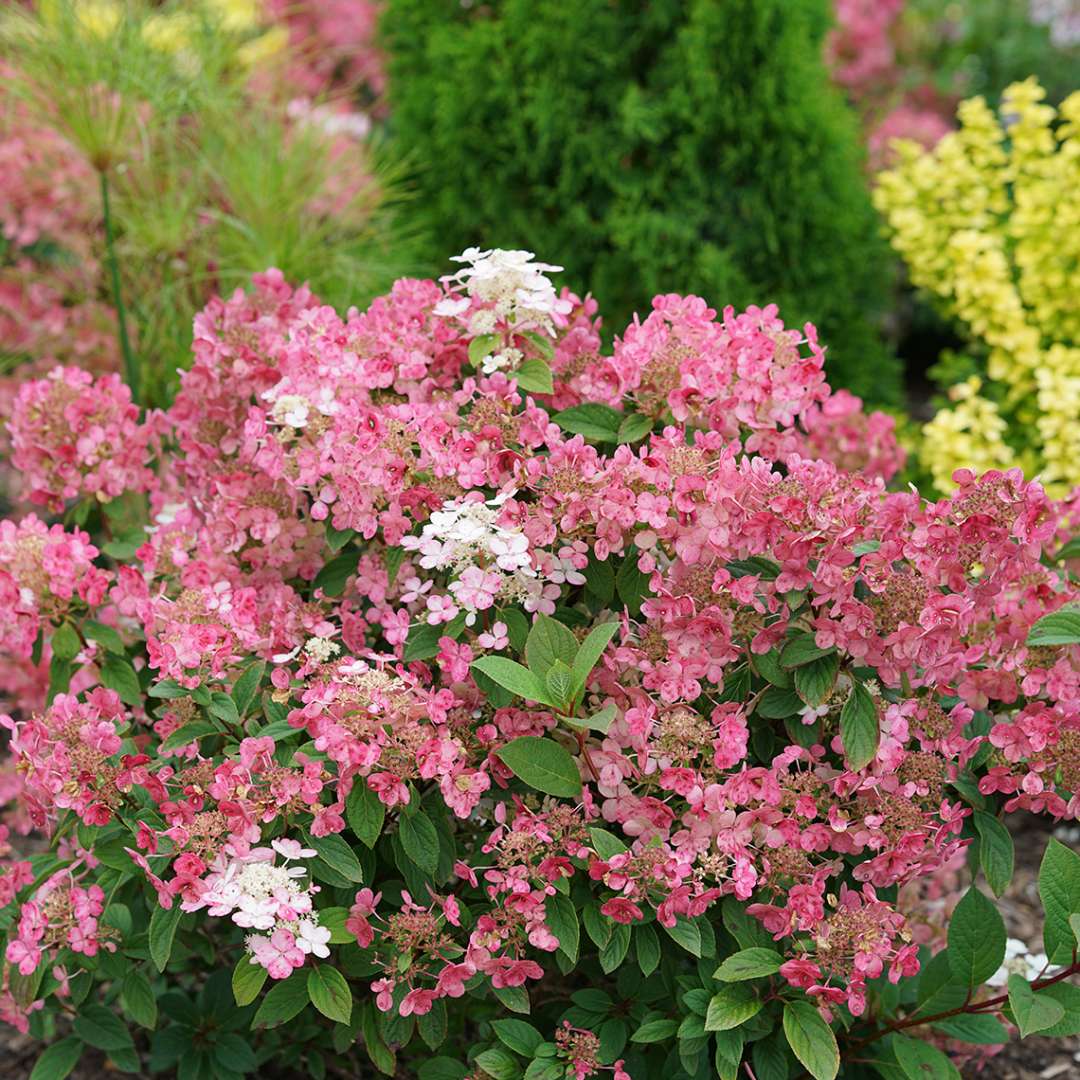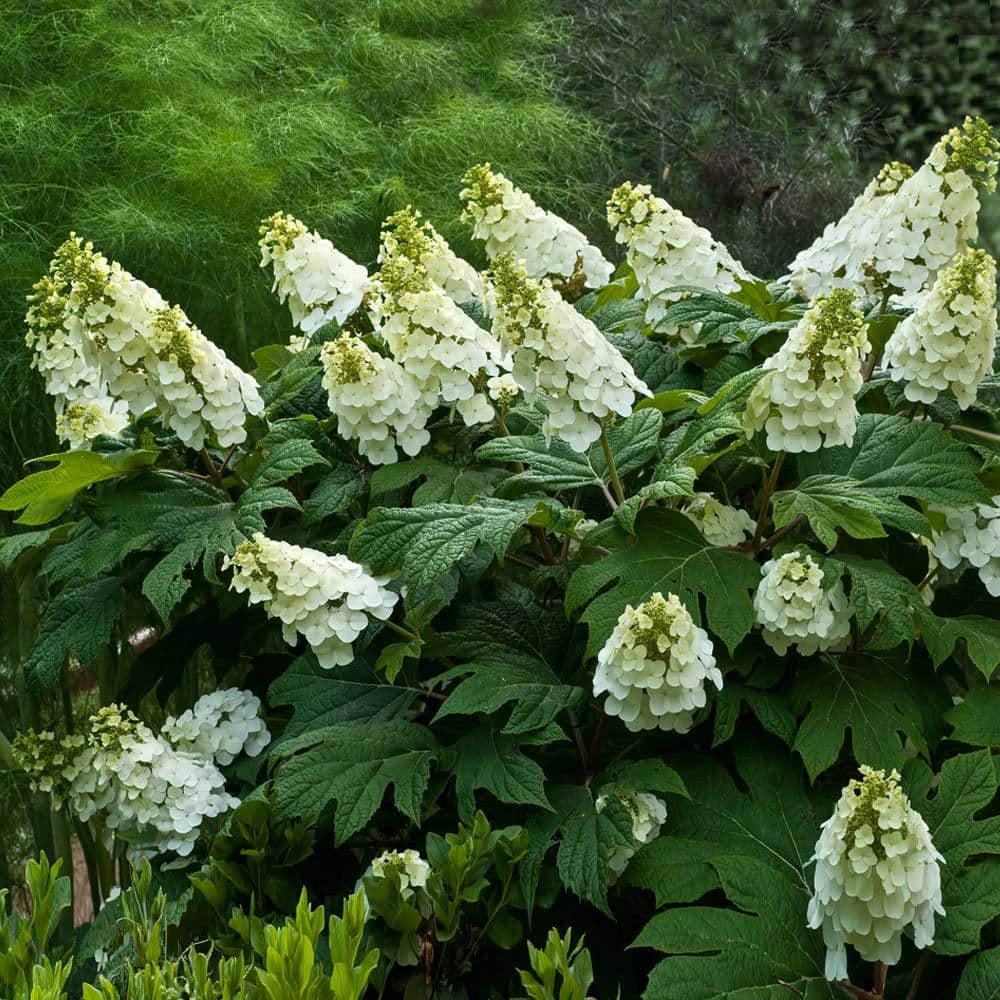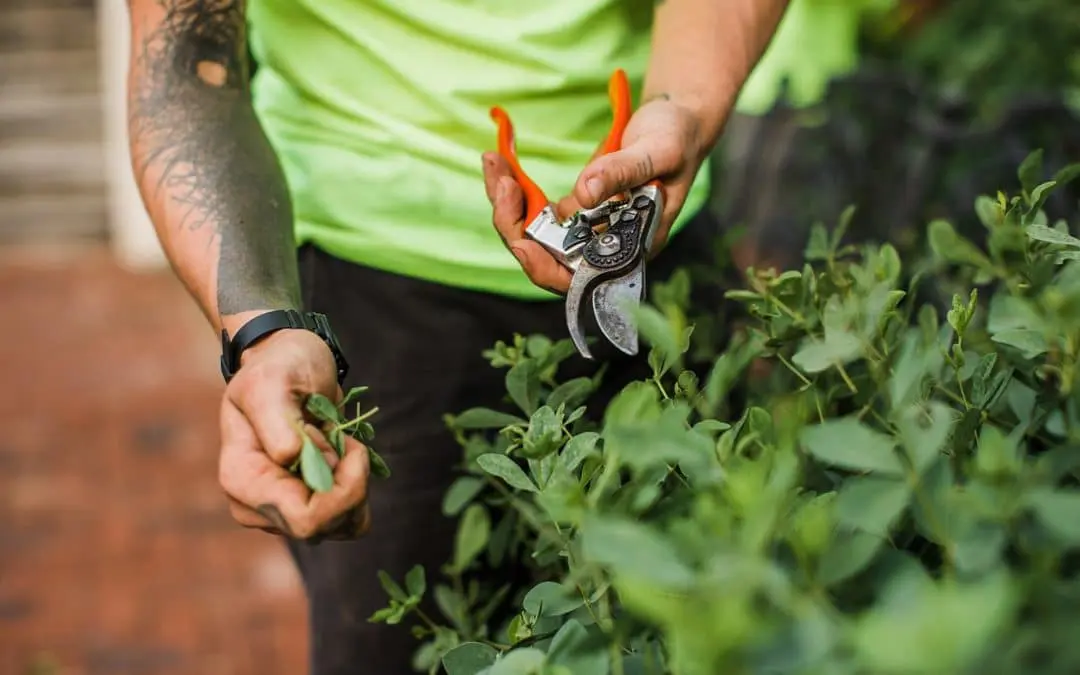
by Emily Vogler | Apr 1, 2023
Spring has officially sprung! What’s the next step for your landscaping? For many gardeners, April is the start of the gardening season. Check out these easy tips to get your yard in shape:
- Re-seed the damaged or bare areas of the lawn.
- Mow established cool-season turf grasses weekly or as needed; raise mower height to three to four inches.
- Contact us for a quote on lawn care. We can help by first completing a soil test to find out the actual composition of your soil. This test measures the soil’s pH level and points out nutrient deficiencies, and is the best way to know the next steps to take to improve the growing conditions in your landscape.
- Replace or refresh mulch around plants.
- Prune spring blooming shrubs and vines after they finish flowering. Allow foliage on spring bulbs to die back and dry before removing, so it can store food for next year. If you would like our help, our team can do a seasonal clean-up for you!
- Plant ground covers and warm-season annuals and perennials as soil temperatures warm and the danger of frost has passed. You can find all your gardening needs at our garden center!
- Check roses, ornamentals and vegetables for powdery mildew, prevalent in mild, moist spring weather.
- Check new growth on ornamental plants weekly for aphids and scale insects and treat with a natural pesticide, if necessary.
- Water all your plants when they’re dry, but be particularly diligent with new plantings that can quickly dry out in our persistent spring winds.
- Start up and test your irrigation system.
To begin your next project, schedule a phone consultation!
If you would like to work with your existing designer, simply fill in their name in the “Project Details” section.

by Gloria Ballard | Aug 5, 2022
Fall is coming, and we can expect chilly nights soon. But wouldn’t it be great if you could still gather with family and friends out on the patio for a relaxing evening outdoors? Consider the warmth and congeniality a firepit on your patio or an outdoor fireplace can provide.
“Especially during this time of the pandemic, it’s a good way to get outside without going anywhere,” says Gardens of Babylon landscape architect Ryan Fogarty. While most of us no longer need open fires for cooking (except, possibly, for making s’mores), time with friends around a fire can warm the air and the heart.
As the weather cools, a crackling fire on the patio can extend the time you can be outdoors. “It’s a great way to enjoy being out in the yard,” Fogarty says. “It’s like a little retreat.”
Stylish additions
For outdoor entertaining, family gatherings, casual dinners on the patio, a firepit can be the element that brings people together. In an outdoor room, a fireplace can make the space comfortable even when the weather is cold.
“We have definitely seen an uptick this year with people requesting a firepit built into design plans,” Fogarty says. “It’s a cool experience in nature. Like going camping without going camping.”
Style choices run the gamut, from rustic stacked stones to designs that are sleek and modern, or anything in between.
Design and build
A typical firepit for Gardens of Babylon clients may be circular or square, usually 18 inches tall or a little taller. The width depends on the scale of the design, but it’s typically 36 or 42 inches wide or wider, Fogarty says. It may be built of wall block veneer and capstones, but can be any suitable material that may reflect the style of the landscape and the homeowner.
“If it’s in a patio, we build the patio around it,” Fogarty says. In a wood-burning firepit, the logs sit atop fire bricks flush with the ground. Gas firepits are also available. The gas company taps into the home’s gas line and attaches a fireplace insert, and the building crew builds a wall block or other veneer around the insert to hide it, Fogarty explains.
Questions to ask:
Here are some questions to consider when you include a firepit or fireplace in your landscape design:
- How and when you will use it? It is for entertaining large groups or small gatherings? Maybe it’s just for the two of you.
- Do you want wood-burning or gas-fired?
- How large should it be? Is a small firepit big enough? Is a massive fireplace too large?
- What is your style: rustic? Sleek and modern? Something in between?
- What type of seating will be placed around or nearby?
- If a firepit is to be installed in a patio, is there enough space to accommodate it?
- Should the firepit design include an additional wall for seating? “A firepit with a seat wall takes a lot of space,” Fogarty says. Maybe you’d rather have it out in your yard.”
A fireplace has an extra set of considerations. “The majority of fireplaces we have worked on have been a kit, and we veneer it with a brick or other natural veneer that the homeowner wants, Fogarty says. “A fireplace also requires a chimney flue and the insert, which comes with the kit.”
“For homeowners with kids it’s good for getting outside and sitting around,” she adds. And those marshmallows melting over the firepit for s’mores are something even the kids will enjoy.

To discuss ways to include a firepit or fireplace in your landscape design plans, book a consultation with a Gardens of Babylon landscape design team professional here.

by Gloria Ballard | Aug 26, 2020
Landscape Audio makes your outdoor space special
Imagine relaxing in your personal outdoor retreat. It probably has comfortable seating, just the right amount of shade and sun, and soothing music all around. A custom sound system designed for the specific needs of your landscape takes outdoor music enjoyment to the next level. An outdoor audio system is a nice addition to your outdoor living area, says Eric Van Grinsven, a landscape designer with the Gardens of Babylon design team. A backyard retreat is the area where you can get away to when you need a break. “It’s your little spot you can disappear to or just relax and be surrounded by nature.”

Indoor, outdoor: What’s the difference?
Your favorite music sounds good indoors because there are walls and ceilings to bounce the sound back to your ears. But even the best indoor speakers, when they’re outdoors, send music out into the open where sound quality is diminished. A system designed for outdoor spaces balances the sound coverage throughout the area, tailored specifically to your landscape design. Outdoor speakers are also more durable, built to withstand the sun, wind, rain, cold, dust, dirt, bugs and other elements that you expect in an outdoor environment.
How does outdoor audio work?
Gardens of Babylon is a certified dealer of Coastal Source, a landscape audio systems company based in Moorestown, NJ. Chris Marshall, a Coastal Source landscape lighting and audio designer, explains that a landscape audio design specialist will consider the size, shape and needs of an area, based on the landscape design submitted by the dealer. The setup generally includes a power supply, amplifier, audio streamer and speakers.

Interested in including audio in your backyard retreat? Schedule a free phone consultation through the Irrigation, Lighting & Audio portal on the Gardens of Babylon website. You can also schedule an in-person audio demonstration to hear how outdoor audio can transform your outdoor living areas.

by Matt Kerske | Aug 4, 2020
When choosing the right hydrangea, there are a couple things to consider first:
- Will the hydrangea go in full sun, partial sun, or shade?
- What size shrub were you looking for?
- Do you want colorful blooms or just white?
Our staff is happy to help if you need more advice or any help deciding which of these options to go with!
Full Sun Hydrangeas
These hydrangeas can tolerate partial sun but prefer full sun (6-8 hours)
 ‘Bobo’ Hydrangea paniculata – This dwarf flowering bush grows to about 3’ x 3’ and blooms during the summer with white blooms. They bloom on new growth and would need to be pruned in late winter or early spring. These make good border plants and have strong stems that do not droop with full blooms.
‘Bobo’ Hydrangea paniculata – This dwarf flowering bush grows to about 3’ x 3’ and blooms during the summer with white blooms. They bloom on new growth and would need to be pruned in late winter or early spring. These make good border plants and have strong stems that do not droop with full blooms.

‘Limelight’ Hydrangea paniculata – With white summer blooms that eventually turn white and fade to a rosy shade, these grow to about 6’- 8’ x 6’- 8’. They bloom on new growth and need to be pruned in late winter or early spring. Stems occasionally need support when in bloom.

‘Little Lime’ Hydrangea paniculata – This is a dwarf form of
the Limelight and grows to about 3’- 5’ x 3’- 5’.


‘Quick Fire’ Hydrangea paniculata – This bush grows
to about 6’- 8’ x 6’- 8’ and blooms white fading to red into
the fall. They need to be pruned in late winter or early spring. This hydrangea begins blooming in the summer about 1 month before other summer blooming hydrangeas.

‘Incrediball’ Hydrangea arborescens – This gorgeous white flower grows to about 5’ x 5’ and is a native type. The
Incrediball is an improved variety of the Annabelle that has larger white blooms and sturdier stems to support them.
Cut back in late winter to early spring.

‘Annabelle’ Hydrangea arborescens – These flowers grows to about 5’ x 5’ and is a native type. These hydrangeas
bloom white and make a nice addition to rain gardens.
Partial Sun Hydrangeas
These hydrangeas can handle shade but prefer partial sun (4-6 hours)

‘Ruby Slippers’ Hydrangea quercifolia – This is a dwarf hydrangea that grows to about 4’ x 4’ and blooms white fading to red. Oakleaf hydrangeas are a native type. Prune after blooming ends in fall.

‘Pee Wee’ Hydrangea quercifolia – This is a dwarf version that grows to about 3’ x 3’ and blooms white. Oakleaf hydrangeas are a native type. Prune after blooming ends in fall.

‘Alice’ Hydrangea quercifolia- This hydrangea grows to about 6’ – 8’ x 6’ – 8’ and blooms white. It is a native variety and is pruned after blooming ends in fall. This type is known for pest and disease resistance.

‘Snow queen’ Hydrangea quercifolia – This hydrangea grows to about 6’ x 6’ and blooms white. It is a native variety and is pruned after blooming ends in fall.
Shade Hydrangeas
These hydrangeas can tolerate partial sun but prefer full shade

‘Endless Summer Bloomstruck’ Hydrangea macrophylla –
These beauties grow to about 4’ x 4’ and bloom ranging from purple to pink depending on pH of soil. More acidic soil makes them more blueish purple and lime can help them to turn pink. The endless summer collection can bloom on old and new growth enabling them to be pruned throughout the year.

‘Endless Summer Blushing Bride’ Hydrangea macrophylla-
These grow to about 3’- 6’ x 3’- 6’ and bloom white. The endless summer collection can bloom on old and new growth enabling them to be pruned throughout the year.
With any of these hydrangeas, it is important to know that they need a lot of water and will need to be watered regularly the first couple seasons after planting until they are established. The ideal time to plant is in the fall!
Stop by the store to shop, and our knowledgeable staff will be happy to help find you the perfect plant for your landscape!

by Gloria Ballard | Jul 1, 2020
Whether your yard is a blank slate that needs form and color or a hot mess that needs to be re-imagined and refurbished, a landscape designer can help. How do you find the right person for the job?
First, look for someone who has training in the field, is certified and has experience, suggests Gardens of Babylon’s co-owner Matt Kerske. “A designer learns to become a great designer by seeing finished designs and learning from them.” A landscape architect is also schooled in handling drainage issues, hardscape elements and other structural changes.
Consider the scale of your ideas and ask to see projects in the designer’s portfolio to determine the level and type of work they do. Some designers only provide a concept and final plan, and may suggest installers; others offer start-to-finish design and installation. Think about whether you want design only, or if yours is to be a design-and-install project.
You + Landscape Designer = Working Together
It’s important for the designer’s and client’s visions to align from the beginning, and as a client, you can help the designer get a feel for your style by sharing pictures of landscapes you like, or showing photos of your interior spaces.
Then it’s good to establish priorities. “I like to call them the needs and the wants in the beginning,” Matt says. A good designer can help define and adjust priorities, and will discuss what’s most important in considering a finished plan. Once work has begun, any revisions may cause delays and frustrations.
Consider the cost
For many clients, the budget is the really big consideration, Matt says. “It’s really common that people are not aware of what a lot of landscape elements cost.”
When the client has an idea at the beginning of the process of how much they can spend, the designer and client can work together to establish the scope of the work to be done. When the designer knows the budget boundaries, it’s easier to establish a realistic idea of what can be accomplished. This may mean choosing similar materials and finishes in a lower price range, for example, to achieve a client’s goal, so it’s important for the designer to have a sense of what a typical project can usually cost.
“It comes down to money, and value, for the client,” Matt says. “A designer wants to make sure the client is getting a good value for what they are expecting. This helps the customer establish priorities.”
Getting it done
Gardens of Babylon is a design/build company that works with clients from concept plan to final draft on the design end, and a project team that installs the landscape elements and plantings based on the design. The design/project team works with the client in choosing materials and plantings, and discusses any possible adjustments or modifications and their accompanying costs that may arise. “We make sure there are no hidden fees, and see the project from start to finish,” Matt says.
Designers on the staff have worked to develop a creative list of plants that are appropriate for the Middle Tennessee climate, and hardscape items that are time tested and durable. “Our firm has more than 15 years of experience and we’re very practical on our designs. That’s a great asset when it comes to ease and efficiency of the overall project.”
—

If you’re interested in speaking to designer about a new landscape project, click here to select a time for a free phone consultation.



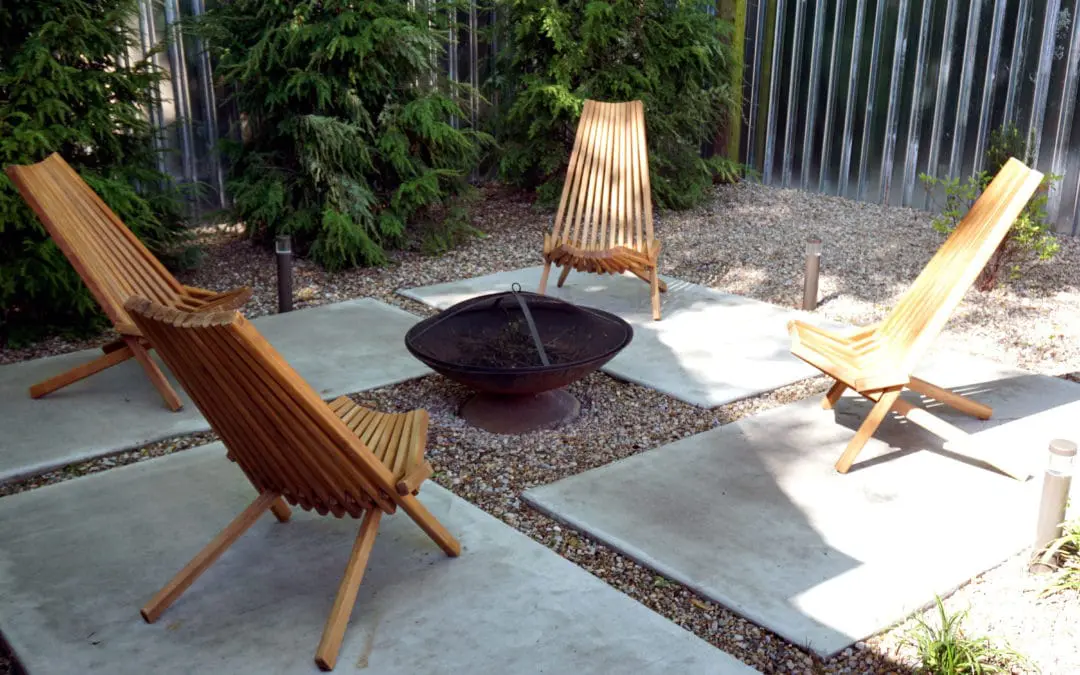
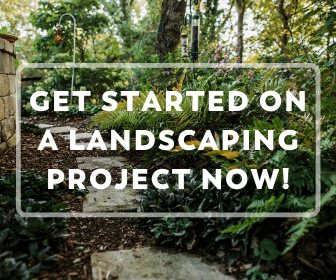
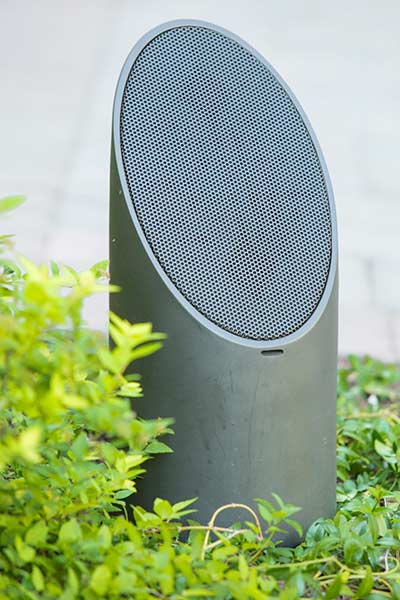

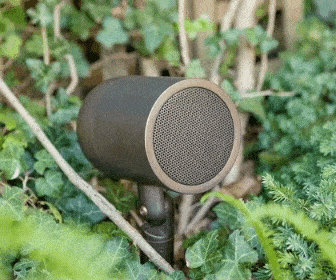

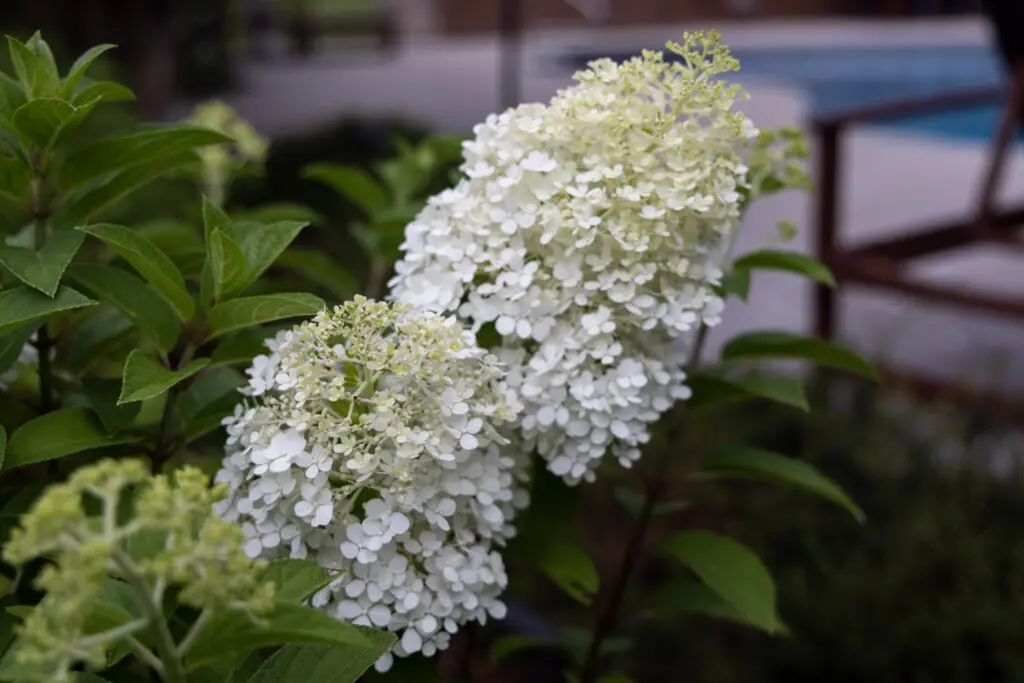 ‘Bobo’ Hydrangea paniculata – This dwarf flowering bush grows to about 3’ x 3’ and blooms during the summer with white blooms. They bloom on new growth and would need to be pruned in late winter or early spring. These make good border plants and have strong stems that do not droop with full blooms.
‘Bobo’ Hydrangea paniculata – This dwarf flowering bush grows to about 3’ x 3’ and blooms during the summer with white blooms. They bloom on new growth and would need to be pruned in late winter or early spring. These make good border plants and have strong stems that do not droop with full blooms.

